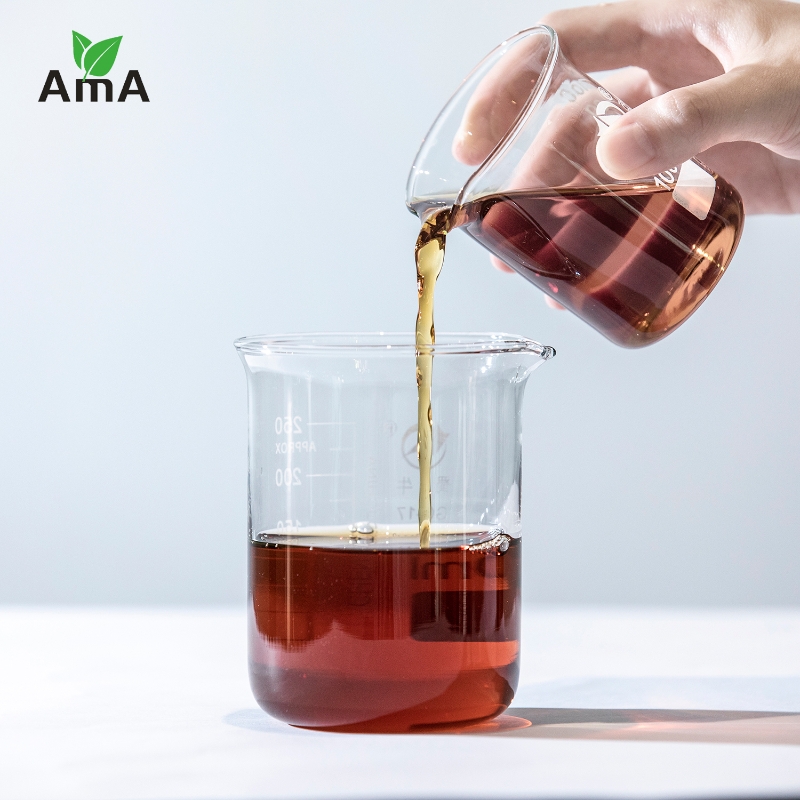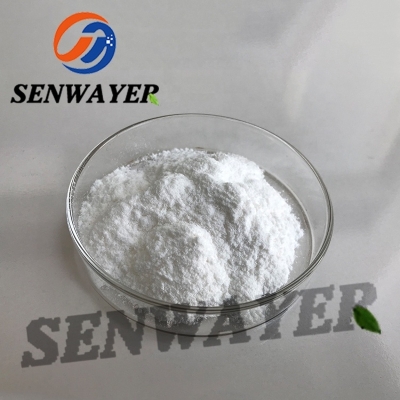-
Categories
-
Pharmaceutical Intermediates
-
Active Pharmaceutical Ingredients
-
Food Additives
- Industrial Coatings
- Agrochemicals
- Dyes and Pigments
- Surfactant
- Flavors and Fragrances
- Chemical Reagents
- Catalyst and Auxiliary
- Natural Products
- Inorganic Chemistry
-
Organic Chemistry
-
Biochemical Engineering
- Analytical Chemistry
- Cosmetic Ingredient
-
Pharmaceutical Intermediates
Promotion
ECHEMI Mall
Wholesale
Weekly Price
Exhibition
News
-
Trade Service
The emergence of 2nd generation EGFR-TKIs has greatly improved the survival and quality of life of cancer patients (especially NSCLC patients);
here, special statistics since the first EGFR-TKI Gifettinib, the world's 11 EGFR-TKIs listed.
EGFR-TKI 1/2/3 generation development in 1988, the first researchers proposed EGFR as a potential target for cancer; In 2013, two generations of the representative drug afatinib were approved for the market, and in 2015, three generations of EGFR-TKI oghithinib were approved for the market, showing high and lasting responses to patients with advanced EGFR-TKI treatment failures with the first and second generations of EGFR-TKI treatment... Figure 1.1: Targeting the significant progress of EGFR in lung cancer treatment - Timeline EGFR structure and function of the EGFR gene, located in the 12-14 zone of the short arm of chromosome 7 in humans, contains 28 exons, of which 18 to 24 exons can encode the tyrosine kinase part of the receptor, but more than 90% of EGFR mutations occur in 19 to 21 exons, especially 19 exons, accounting for about 60% of all mutations.
point mutations in exon 19 base loss and exon 21 are often sensitive to EGFR-TKI therapy.
EGFR, a glycoprotein with a molecular weight of 170kD consisting of 1,186 amino acid residues, is a transmeanor subject that belongs to a family of four related proteins, including EGFR (erbB-1/HER1), erbB-2 (HER-2), erbB-3, and erbB-4.
erbB-1 is widely distributed on epithal cell membranes other than vascular tissue; erbB-2 is commonly expressed in the epithirsty, gland epithirsty, and embryos of normal human cavities; erbB-3 is expressed in most areas except the hematologic system; and erbB-4 is detected in all adult tissue except the nephroblast and surrounding nerves.
EGFR can be divided into three parts: extracell, trans-membrane and intrinsic.
has so far been found that there are six ligations of EGFR: epidermal growth factor (epidermal growth factor, EGF), conversion growth factor A (TGFA), amphire-guin, betacelluin (BTC), heparin-binding EGF (HBEGF) and EPR.
combination of EGFR and its mating body has high affinity, saturation and specificity.
binding of the receptor, the binding of the receptor causes the polyurization of the receptor, forming a 1ogeneic or heterogeneic dmogeneity.
cross-linked phosphate occurs in a phosphatized subject, i.e. a specific tyrosine residue phosphonate on one and another, activating the TK sub-region of the intraocysculate region, thereby stimulating the next level of signal conduction.
EGFR can be divided into 3 steps: 1) The combination of EGFR with ligands can lead to the formation of isotopic binuclears in receptors, and can also form heterogeneous djures with other EGFR families; Signals are transmitted to the nucleus through two channels, one is the Ras-Raf-MAPK route, the other is the PI3K-Akt-mTOR route, and 3) when the signal is transmitted to the nucleus, it causes an increase in the level of gene transcription in the nucleus, which causes cell proliferation, transformation, and increased EGFR expression.
2.1 EGFR-TK signal path (Photo: Drug Discovery Today Volume 18, Numbers 1-2 January 2013) 11 EGFR-TKIs listed worldwide. Non-tini, hydrochloric acid elotini, xylene sulfonate Rapatini hydrate, hydrochloric acid Ektini, Malay acid afatini, methicillin Oghithini, Omotini, Malay acid ernatini, malaic acid ergotini, dacotinib, methicillin, is now introduced.
NO1 gyfeitinib (2002) the first selective inhibitor of EGFR tyrosine kinase, suitable for single-drug continued treatment of platinum and dorctic chemotherapy failure of local late stage or metastasis non-small cell lung cancer.
research and development company is AstraZeneta, approved by PMDA in July 2002, approved by the FDA in May 2003, approved by NMPA in February 2005, listed by EMA in June 2009, sold by AstraZeneta, the product named Iressa ®.
global sales, the average sales from 2015 to 2019 were nearly $500 million.
NO2 hydrochloric acid erlotiniry (2004) is developed for Genetek (acquired by Roche) and Astellas, a first-line treatment for non-small cell lung cancer (NSCLC) and pancreatic cancer.
was approved for listing by the FDA in November 2004, by the EMA in September 2005 and by PMDA in October 2007, by Genente and Astellas in the United States, the product is called Tarceva ®.
global sales, the average sales revenue from 2011 to 2014 >1.8 billion.
A randomized, publicly labeled clinical trial showed significant improvements in PFS in patients treated with erotinie compared to chemotherapy patients (10.4 months vs 5.2 months);
a randomized, double-blind, placebo-controlled trial conducted in patients with localized advanced, non-removable or metastatic pancreatic cancer, the median OS in the Erotini and Gissital and Gissithamin groups was 6.5 months and 6.0 months, respectively, and the median PFS was 3.8 months and 3.6 months, respectively, or 8.6 percent and 7.9 percent, respectively.
NO3 xylene sulfonate rapatinib hydrate (2007) was originally developed by GSK to treat metastasisd or advanced breast cancer and metastasis breast cancer in women that are post-menopapaian with hormone-subject-positive hormones.
was approved by the FDA in March 2007, approved by the EMA in June 2008, approved by PMDA in April 2009, the product is called Tykerb®, and later with Novarma's acquisition of GlaxoSmithKline's anti-tumor drug division, now Novarma is responsible for the sale.
evaluated the efficacy and safety of Rapatinio's combined carpedabine treatment for breast cancer in a randomized, Phase III trial.
The mid-level TTP in the Lapatini Joint Capathami Treatment Group and the Capabin Individual Treatment Group was 27.1 weeks vs. 18.6 weeks (independent assessment results) and 23.9 weeks vs 18.3 weeks, respectively (researchers assessed The response rates of the Rapatini Combined Carpentry Treatment Group and the Kapatbin Individual Treatment Group were 23.7% vs. 13.9% (independent assessment results) and 31.8% vs 17.4% respectively (as assessed by the researchers).
In another randomized, Phase III trial, the effectiveness and safety of Rapatinib's combined aromatase inhibitors were confirmed, and the median PFS in the Rapateni-curto-bead monoantigen-aromatic enzyme inhibitor group and the crater-bead-aromatic enzyme inhibitor group were 11.0 and 5.6 months, respectively, with response rates of 22.5% and 8.5%, respectively.
NO4 hydrochloric acid ektinib (2011) research and development company for Beda Pharmaceuticals, in June 2011 was approved by NMPA for EGFR sensitive gene mutations of local late stage or metastasis NSCLC first-line treatment, by Beda Pharmaceuticals listed in China, the product is named Conmana®/Kemina ®.
2005 Beda submitted a clinical application for Ektinib as a class 1.1 new drug and obtained clinical trial approval in June 2006; Clinical Phase I trials;
sales, global sales in 2016-2019 were between $150 million and $220 million.
A large-scale randomized, double-blind double-simulated, positive treatment drug (Gyfeitinib) controlled multi-center Phase III clinical trial completed in 27 hospitals across the country compared safety and efficacy with gifeitinib in patients with advanced NSCLC who had underwent chemotherapy.
test results show that the efficacy of hydrochloric acid ektinib on late NSCLC is comparable to that of gyfeitinib, and the safety is better than gyfeitinib.
No5 Malay acid aphatinib (2013) was developed by Boehringer Ingelheim for the first-line treatment of metastasis non-small cell lung cancer.
was approved by the FDA in July 2013, approved by the EMA in September 2013, and listed by PMDA in January 2014, and sold by Grigg Ingham under the ®.
A randomized, multi-center, open-label trial of advanced non-small cell lung cancer with EGFR mutations as a first-line drug had a median of 11.1 months, significantly different from the chemotherapy group (6.9 months).
A randomized, multi-center, open-label, control group treated with metastasis squamous non-small cell lung cancer after first-line chemotherapy had a median of 2.4 months for malay acid afatinib and 1.9 months for control group Erotinib;
No6 methadone ohitiny (2015) The variety was developed by AstraZenecon and approved for the treatment of EGFR-T790 mutation-positive non-small cell lung cancer; DA approved for listing, EMA approved listing in February 2016, PMDA approved listing in March 2016, NMPA approved listing in March 2017, the commodity name Teresa ®.
global sales, the variety reached nearly $1 billion in 2017, $1.86 billion in 2018 and $3.189 billion in 2019.
based on Phase III clinical study data, oxytinib reduced the risk of disease progressity by 54% compared to current standard first-line treatments (erotinib or gyfeitinib).
in the double-blind study, the medium PFS for standard therapy was 10.2 months, while the medium PFS for oghithini was 18.9 months.
baseline brain scans were performed on 200 patients, 128 of whom had measurable or non-measurable CNS lesions;
April 2018, Oghithini was approved by the FDA for first-line treatment of patients with EGFR mutation-positive (exon 19 missing or exon 21 mutation) NSCLC metastasis patients, previously approved for second-line medication.
NO7 Omatini (2015) The variety was originally developed by Korea-U.S. Pharmaceuticals to treat advanced or metastasis T790M mutation-positive non-small cell lung cancer; Identified for NSCLC treatment, approved by Korea MFDS in May 2016 for listing under the name Olita ®, and re-ding Pharmaceuticals submitted a class 1.1 clinical application to NMPA in May 2016.
2017 at the Asian ESMO Conference, the results of a clinical Phase II trial of patients with failed first-line EGFR-TKI treatment of T790M-positive NSCLC were published: 115 patients with an average age of 63 years. In patients independently assessed, Olmutinib showed moderate activity and tonable safety, with mPFS at 6.9 months, DCR at 87.8%, and the most common AEs being diarrhea, but one patient died from TEN during the study.
NO8 Malay acid lanatinie (2017), which was originally developed by Pfizer and licensed to Puma in 2011, is used to treat HER2-positive metastasis breast cancer, which has previously been treated with tracodone.
was approved by the FDA in July 2017, EMA approved for listing in August 2018, and NMPA approved for listing in April 2020 under the name Nerlynx ®.
PS: In February 2018, Beihai Kangcheng (Beijing) Pharmaceutical Technology Co., Ltd. and Puma Biotechnology signed an exclusive license agreement for the development and commercialization of Nerlynx® in China.
global sales, global annual sales for 2018-2019 >200 million.
a multi-center, randomized, double-blind, placebo-controlled ExteNET trial included 2,840 women with HER2-positive breast cancer who received testuzumab-assisted therapy, with a primary clinical endpoint of non-invasive disease survival rate (iDFS), and a risk ratio of 94.2% vs 91.9% in the placebo group iDFS in the 24th month.
NO9 Malay acid pyridoxine (2018) research and development company for Jiangsu Hengrui, in August 2018 was approved by the NMPA for the treatment of HER2-positive metastasis breast cancer patients, the product is named ®.
submitted an IND application to the NMPA in May 2011, obtained a class 1.1 clinical approval for Chinese chemical drugs in April 2012, initiated a clinical Phase I trial for HER2-positive breast cancer patients in 2013, initiated a clinical Phase I/II trial for HER2-positive metastasis breast cancer patients in 2015, and submitted a listing application in China in August 2017







